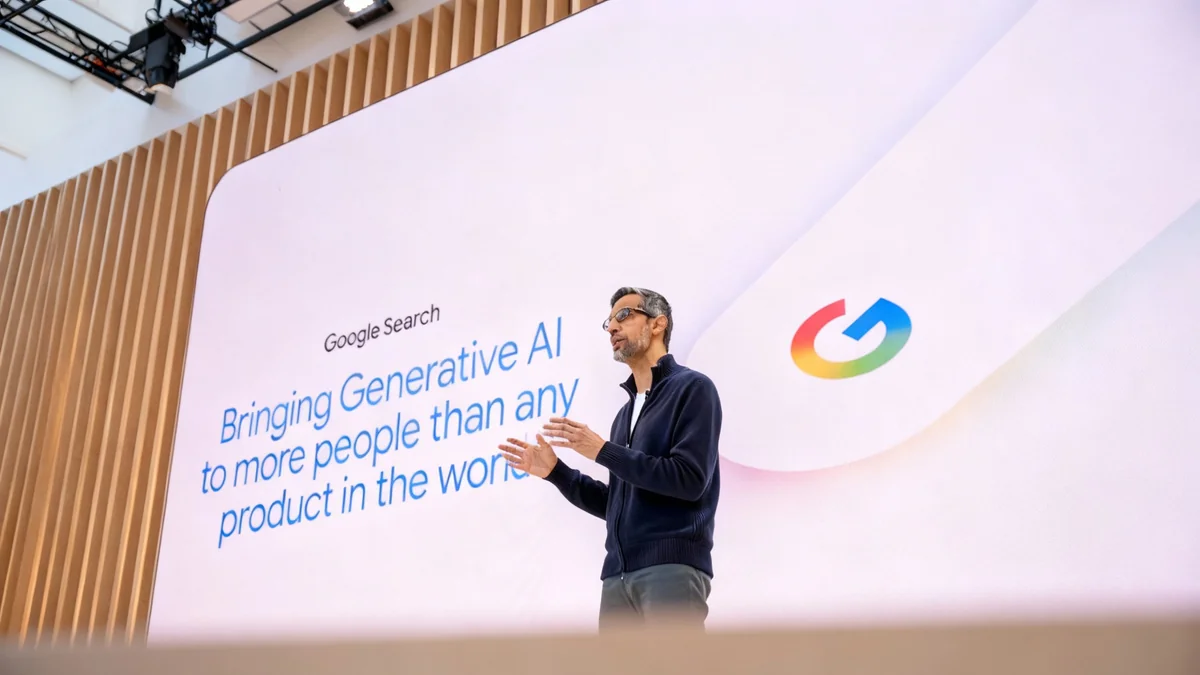Meta has entered into a strategic partnership with the United States government to facilitate the adoption of its Llama family of artificial intelligence models across federal agencies. The initiative aims to accelerate AI innovation within the public sector and improve the efficiency of government services.
Announced on Monday, September 22, the collaboration makes Meta's open-source AI tools more accessible to all federal departments. This move is intended to support the goals outlined in America’s AI Action Plan by providing government bodies with advanced, cost-effective technology while allowing them to maintain control over sensitive data.
Key Takeaways
- Meta is providing its open-source Llama AI models to all U.S. federal agencies.
- The partnership is designed to speed up AI adoption in the public sector.
- Federal agencies will retain full control over their data processing and storage.
- The initiative supports America's AI Action Plan by promoting innovation and efficiency.
A New Initiative for Public Sector AI
The collaboration between Meta and the U.S. government marks a significant step in integrating advanced AI into public services. By offering its Llama models, Meta aims to equip federal agencies with powerful tools to develop and deploy AI applications more efficiently.
In a press release, Meta founder and CEO Mark Zuckerberg highlighted the potential benefits of the partnership for the public. He stated that the goal is to ensure all Americans can experience the advantages of AI innovation through improved government operations.
“America is leading on AI, and we want to make sure all Americans see the benefit of AI innovation through better, more efficient public services. With Llama, America’s government agencies can better serve people.”
The core of this initiative is to leverage the open-source nature of the Llama models. Because the technology is publicly available, government technical teams can access, modify, and build upon it without the high licensing costs often associated with proprietary software. This accessibility is expected to lower the barrier to entry for many agencies looking to explore AI solutions.
What Are Open-Source AI Models?
Open-source AI models, like Meta's Llama, have their underlying code publicly available. This allows developers and researchers to freely use, study, and modify the technology. This approach contrasts with closed-source or proprietary models, where the code is kept secret. The benefits of open-source AI include lower costs, increased transparency, and faster community-driven innovation.
Data Control and Implementation
A key aspect of this partnership is the emphasis on data security and agency control. The announcement specified that federal agencies using Llama models will maintain full control over their own data processing and storage. This is a critical consideration for government bodies that handle sensitive and classified information.
By hosting and running the models on their own infrastructure, agencies can ensure compliance with strict federal data privacy and security protocols. This arrangement addresses common concerns about relying on third-party technology providers for critical government functions.
The collaboration is designed to provide several advantages for federal agencies:
- Reduced Costs: Eliminates expensive licensing fees, allowing for wider experimentation and deployment.
- Customization: Technical teams can adapt the models to meet specific agency needs and missions.
- Enhanced Security: Agencies control the operational environment, minimizing risks associated with external data handling.
- Accelerated Deployment: Access to pre-trained models allows for faster development of AI-powered applications.
According to the official statement, this structure will strengthen the federal government’s ability to test, adapt, and deploy AI solutions responsibly.
Broader Context of US AI Policy
This partnership arrives as the U.S. government continues to define its national strategy on artificial intelligence. The initiative aligns with the broader objectives of America’s AI Action Plan, which focuses on maintaining U.S. leadership in the field. However, it also operates within a complex and evolving policy landscape.
Two months prior to this announcement, the White House released a policy roadmap outlining a strategy to sustain U.S. dominance in the global AI race. That plan emphasized several key areas, including deregulation, infrastructure development, and stricter export controls on sensitive technology.
A notable element of that roadmap was a call for AI systems to be developed with a focus on "freedom of speech" and "American values," steering away from what was described as "ideological bias." In a related directive, the National Institute of Standards and Technology (NIST) was instructed to update its AI risk management framework. The revision was to remove references to concepts such as misinformation, diversity, equity, and inclusion, and climate change.
AI Adoption in the American Workforce
While the government focuses on high-level strategy, AI adoption is already accelerating across the American workforce, particularly among younger generations. A recent report from PYMNTS Intelligence, titled “Generation AI: Why Gen Z Bets Big and Boomers Hold Back,” sheds light on these trends.
The study found that millennials are pragmatically using generative AI to enhance their professional lives. Their engagement with the technology is less about novelty and more focused on achieving tangible outcomes and improving productivity.
Millennials and Generative AI
- 52% of millennials report using generative AI for work-related tasks, the highest of any generation.
- 61% of these users state that generative AI helps them accomplish more work in less time.
This data suggests a significant shift in how AI is perceived and utilized in the workplace. What was once seen as an experimental tool is now becoming an integral part of daily workflows for a large segment of the population. As federal agencies begin to integrate models like Llama, they will be tapping into a workforce that is increasingly familiar and comfortable with leveraging AI for practical purposes. This existing familiarity could help smooth the transition and accelerate the benefits of the new government-wide initiative.





